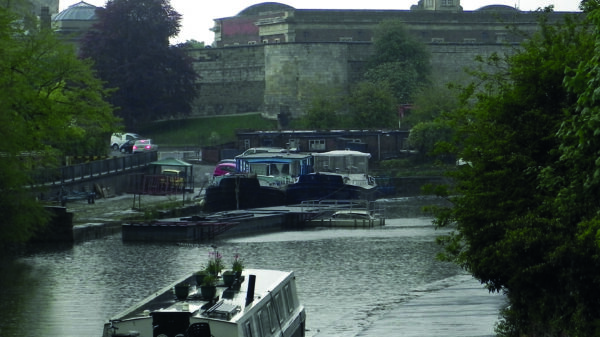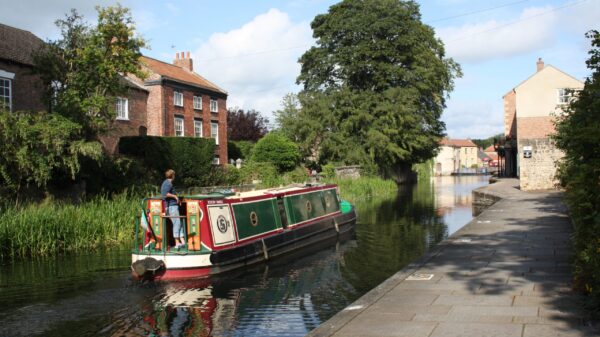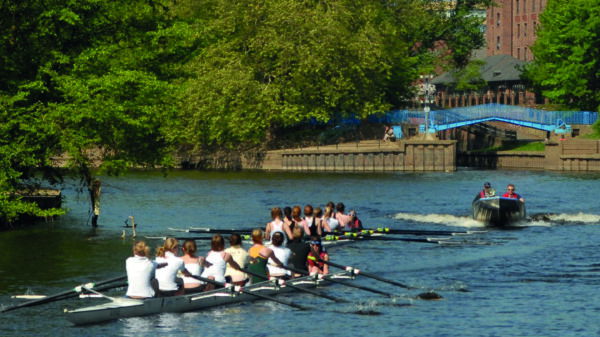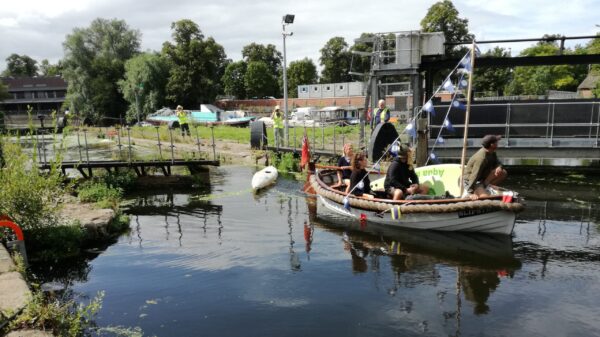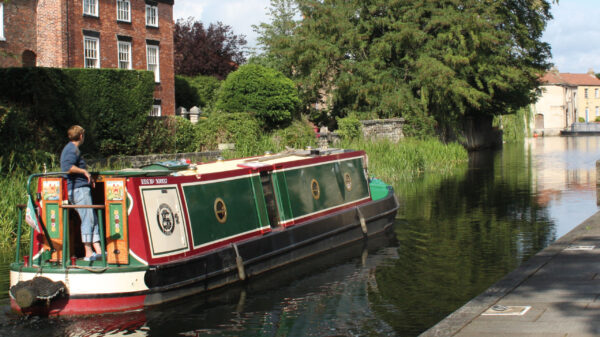About the River Foss
The source of the River Foss is a spring new Newburgh Prior north of Easingwold. It is 19½ miles (31km) to the Blue Bridge in York where it joins the River Ouse. The Foss Navigation Company developed the river from 1793 and made it navigable to the village of Sheriff Hutton with six locks before funds ran out in 1802. The navigation above Yearsley Bridge was abandoned in 1859 as part of the York Improvement Act.
Barges bringing 200 tonnes of newsprint each week until 1997 to The York Press at Wormalds Cut were the last traffic on the River Foss. Rowntrees, the confectionary company now part of Nestlé, had water borne deliveries of sugar, gum and chocolate crumb to their wharf until the 1980s. Castle Mills Lock, named after the water mills in the vicinity of York Castle, is unique both in its unusual gate opening gear, and the fact that it is operated by IWA Volunteers. City of York Council, the navigation authority, operated the lock for a fee; after local IWA campaigning reached an agreement in 2008, trained IWA volunteers now operate the lock as a free service. The lock is unsuitable for user operation as the gates are opened and closed with winches and chains; eight chains in total, which cross each other, requiring careful operation. The Foss Barrier was constructed below Castle Mills Lock to prevent flooding in 1988. The river is an attractive 1.3 mile of secluded and interesting waterway for a return trip within the day, the limit of navigation is Monk Bridge.
[The photo shows a Nofolk crab boat going through Castle Mills Lock on the River Foss]


